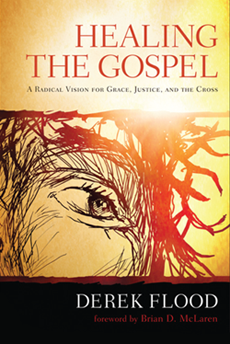The Psychology of Evil, Part 1: The Myth of Pure Evil
Friday, July 28, 2017
Hannibal Lecter, Freddie Krueger, Dracula, Darth Vader, Cruella de Vil. We are all familiar with the myth of pure evil in Hollywood movies. It's a myth both because it serves as a literary device for the stories that shape how we see our world, and also because it is not true. It represents a naive cartoon understanding of what evil actually is.
Don't get me wrong, evil is real. People do really horrible, unspeakable, awful things to other people. If we can understand what leads a person to do that, then we can also discover how to move in the opposite direction, how we can grow and develop morally and socially--collectively and individually--towards being move loving, more just.
One of the key tenets of the myth of pure evil is other-izing, de-humanizing. When we refer to a person as a "monster" it is implied that they do not need to be treated as human. That allows us to treat them inhumanly, and then we ourselves commit evil actions, while thinking that we had no other choice, and perhaps telling ourselves that what we are doing is good and just. So we see our enemies as monsters and do horrible things to them, and they see us do that and think we are monsters, and thus feel justified in doing horrible things to us.
The problem with this cartoon depiction of evil is that it does not help us to break out of these cycles, and in fact contributes to keeping us locked in them. It's a fairy-tale world where we are the good guys and they are the bad guys. That's the opposite of being introspective and self-aware. What I hope to do instead is take a realistic and deep look at the reality of human evil that is a part of all of us, in the hopes of finding how we can move towards being good in a realistic and deep way.
Based on the work of psychologist Roy F. Baumeister, Steven Pinker, in his book The Better Angels of Our Nature identifies five roots of evil: predation, dominance, revenge, sadism, and ideology. In the first part of this series I will discuss the last two of these, sadism and ideology. When you think of ideology, think Isis. When you think sadism, think Charles Manson. Hollywood and the news media are obsessed with these stories of terrorists and psychopaths. I suspect they do this because it reflects our own obsession. These are the things of our real life nightmares. This is the kind of evil that leaves us baffled, perplexed and horrified. The problem is that the media tells us this story with very little reflection or insight because it’s an easy headline to write. “If it bleeds it leads” they say. This stokes our fear, rather than helping us to gain insight.
Let's begin with taking a look at sadism. Despite its frequent depiction in movie villains, sadism—taking pleasure in hurting and killing others--is actually quite rare. Baumeister explains that sadism is something that one develops into, much like drug addition. Studies have found that, of those actively engaged in violence, only around 5% become sadists. What keeps 95% of people from sadism, Baumeister says, is our sense of guilt.
Whether that sense of guilt is in-built, the product of culture, or a mix of both is not entirely clear. What we do know is that, as mentioned above, only a very small percentage of those participating in violence come to enjoy it. We also know that in the past it was common for people to do sadistic things as a culture. One example is the torture of animals for entertainment. Pinker gives several accounts of how animals, dogs and cats in particular, were brutally tortured as a means of public entertainment in Medieval times. This might indicate that where cultural taboos are absent, more people can develop sadistic tendencies unhindered by guilt.
The idea of someone taking pleasure in hurting others seems to represent what our cliché of pure evil looks like. Think of the Disney villain with his classic mwa-ha-ha-ha! maniacal laugh, and we have the cartoon version of sadism. The “thriller” movie version is only slightly more complex, sometimes it is even less complex. As mentioned previously, this cliché reflects our need to make sense of what seems "monstrous" to us. We watch these “monster movies” to try to process our fears. Unfortunately these movies typically re-enforce our ignorance. To be fair, many Disney movies (for example Zootopia) have actively moved away from that, addressing issues of racism and prejudice in a cartoon. I can’t say the same for action movies.
So what do we do with sadism? First we need to realize that even when the media give us the impression that it’s everywhere – every second headline seems to be about this. We know that it is actually very very rare. It’s also important to note that Baumeister concludes that sadism is not so much a root cause of evil, but rather a byproduct, entering the picture after evil (that is, actively torturing and killing others) is already in progress. It is something that a very small percentage of people have the potential for, perhaps we might even see it as a perversion of sorts. But it is not a root cause, it is not where evil starts. So if we are seeking to find the root causes of evil, the root that it grows from, we will need to look further.
This brings us to the second category: Ideology. Ideology and its connection to violence is something I have discussed at length in Disarming Scripture, and often on this blog. I refer to this as the way of “unquestioning obedience” and have often warned of its potential to lead to violence. As Pascal says, “Men never do evil so completely and cheerfully as when they do it from religious conviction.”
One might say that ideology acts as an antidote to moral conscience. It gets us to turn off our brains and hearts, to shut off our compassion and common sense, thinking that we are doing this “for God.” This can lead parents to harm the children they love, thinking that they are doing God's will or being true to the Bible. It has, as a matter of history, led many pious and idealistic people to commit horrific atrocities in the name of their god or political ideology.
It’s easy to look at groups like Isis and think that we would never be like that. However, studies like the infamous Milgram experiment reveal that the average person is disturbingly capable of hurting others in order to conform to authority. Most of us just go with the crowd -- whether that's in the halls of our high school, at our fundamentalist church, or somewhere else where the stakes are higher.
That's why it's so important to learn to think for yourself, to question, and perhaps most of all, to develop moral courage. If we don’t stand up in the little things, will we stand up for the big things? It’s easy to spot the evil of fanatical extremist ideology in another religion or another nation, and I certainly do not want to deny that this truly is evil. The true test however is whether we are able to stand up to authoritarianism and demagoguery when it wraps itself in our flag and claims our religion.
People often ask me how to deal with things like Muslim extremism. I have focused mainly on Christianity because that is my own faith. So I begin with looking at myself and my own tribe. But the answer to how to deal with Muslim extremism is the same as how we deal with Christian extremism. Fundamentalism is the same is any religion. The antidote to this non-thinking non-empathetic ideology is of course to learn how to have a thinking faith, how to be introspective and reflective, how to grow in empathy and moral maturity.
In understanding ideology as one of the roots from which evil grows, the key takeaway is to recognize that it is therefore not something that we only find in those monstrous bad guys “over there.” It is something that we all, as humans, are susceptible to. Put in the right circumstances we might find ourselves doing the same thing that the people in the Milgram experiment found themselves doing. Denying this does not make us immune. On the contrary, to the extent that we are unreflected about this potential in us, we are all the more susceptible to it. Only by facing these tendencies in us head-on, and actively deciding to move in the opposite direction, can we counter it. In the case of ideology that means, among other things, actively questioning authority and learning to think morally for ourselves. We need to practice it in the little things—among our peers, at school or work or church—if we hope to have the civil courage to take a stand for bigger things.
Labels: compassion, evil, fundamentalism, moral development, moral maturity, series, violence






